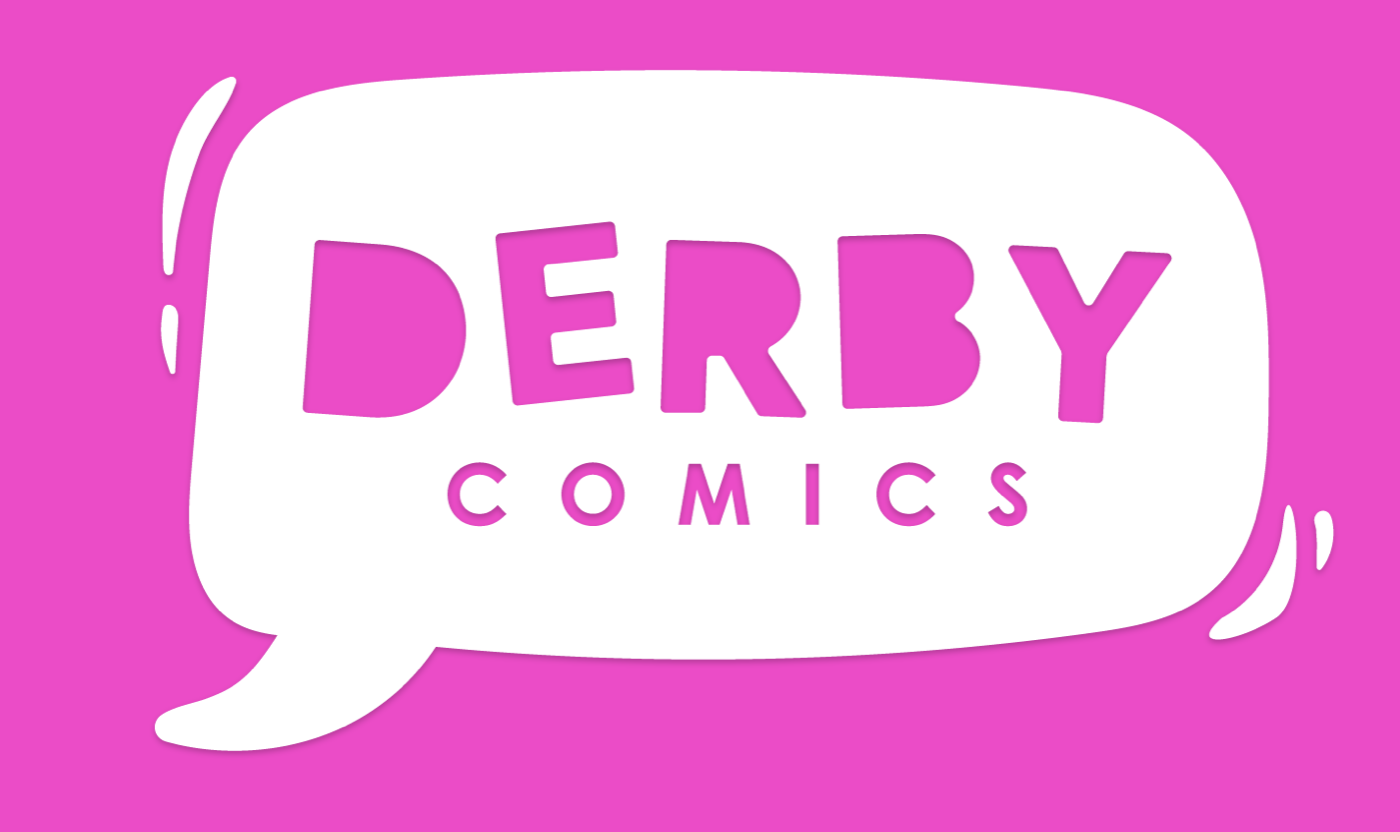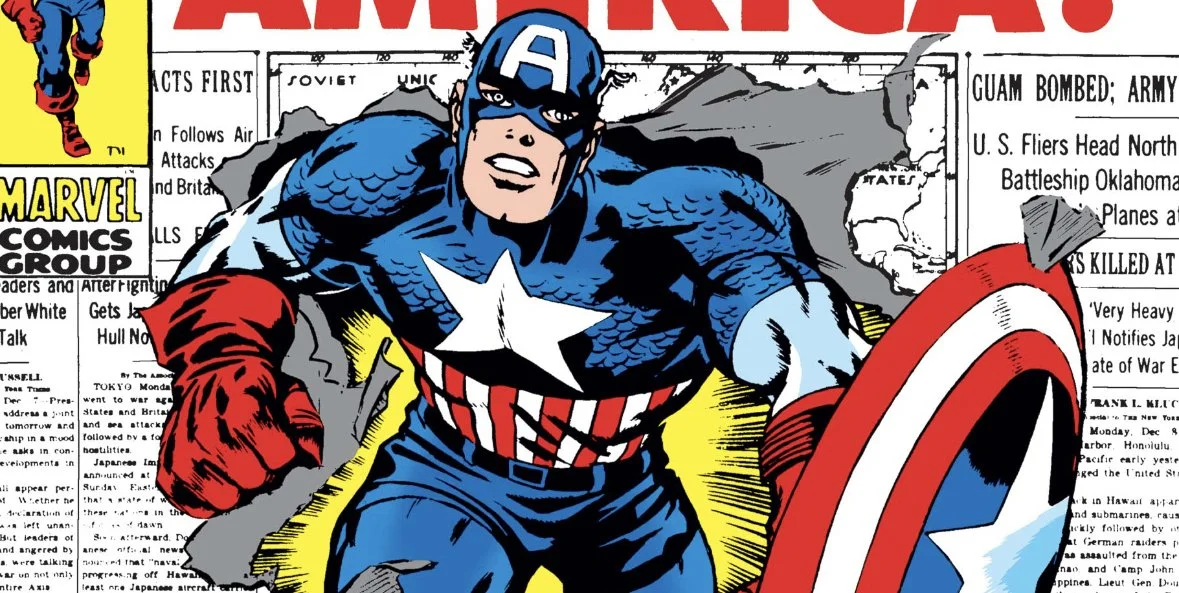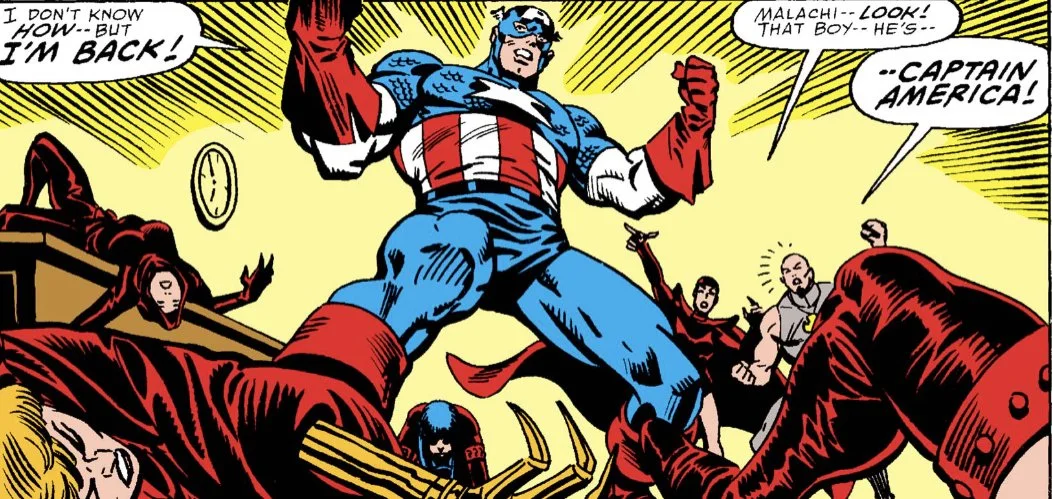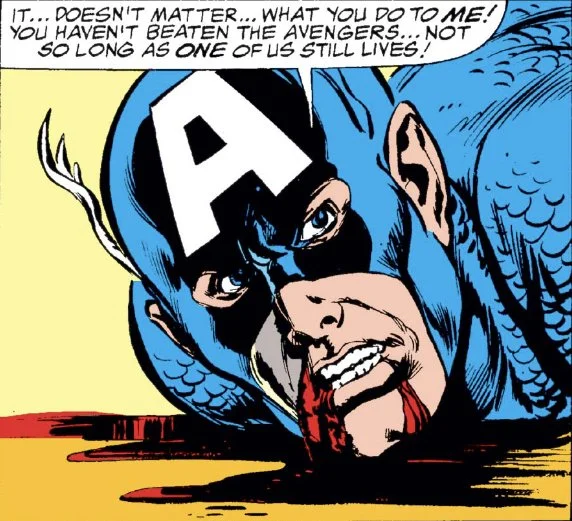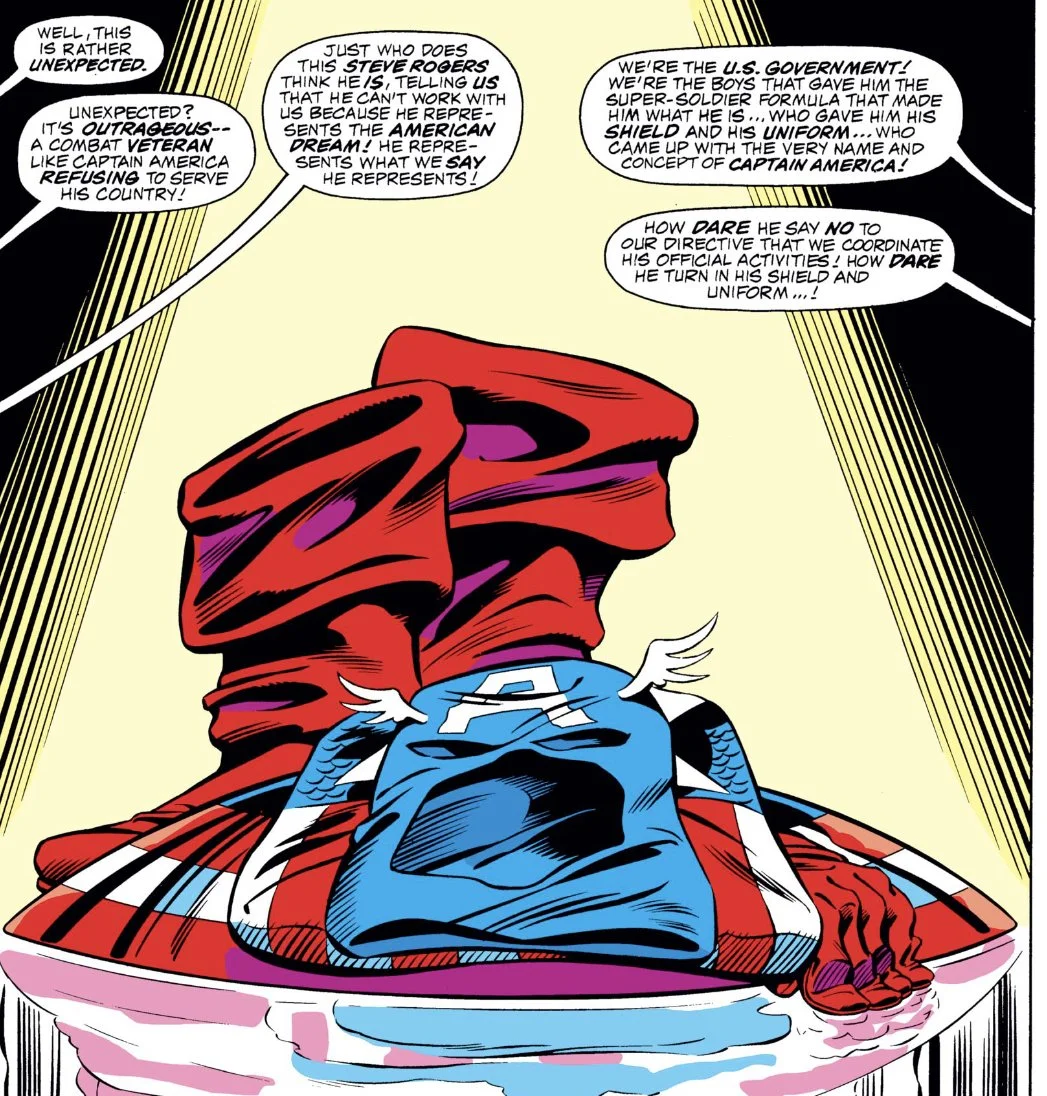The Most Iconic Captain America Moments Throughout Marvel History
Captain America, the Star-Spangled Avenger, has captured the hearts and minds of readers for decades. With his unwavering dedication to justice, freedom, and the American way, Captain America has become an iconic symbol of patriotism and heroism. Throughout the years, his comic book adventures have showcased some truly remarkable story arcs that have left a lasting impact on readers across generations. Let's look back at some of the most iconic story arcs featuring the most iconic superhero to ever wear the stars and stripes!
"Captain America: The Winter Soldier"
The "Winter Soldier" story arc is a critically acclaimed narrative that was published in Captain America (Vol. 5) #1-9 from 2004 to 2005. It was written by Ed Brubaker and illustrated by Steve Epting. This storyline introduces the enigmatic and deadly assassin known as the Winter Soldier, who has a profound impact on Captain America's life and forces him to confront his past.
The arc begins with Captain America discovering that his former sidekick, Bucky Barnes, whom he believed to be dead, has been resurrected as the Winter Soldier, a brainwashed assassin working for a shadowy organization. As Captain America investigates this startling revelation, he uncovers a vast conspiracy involving the Winter Soldier and his own history, which has been manipulated and rewritten.
As the story progresses, Captain America grapples with the moral and emotional implications of his long-lost friend's transformation into a ruthless killer. He embarks on a mission to redeem Bucky and uncover the truth behind the conspiracy that has infiltrated his life. Along the way, Captain America faces off against formidable enemies, including the Red Skull and other powerful figures within the Marvel Universe.
The "Captain America: Winter Soldier" story arc is important for several reasons. Firstly, it revitalized and redefined Captain America's character, introducing a darker and more complex narrative that explored the psychological depths of the hero. It showcased Captain America's resilience and unwavering dedication to his principles, even in the face of personal anguish and betrayal.
The introduction of the Winter Soldier added a compelling new dynamic to Captain America's world. The Winter Soldier represented the consequences of war and the haunting legacy of Captain America's past. The arc delves into themes of identity, redemption, and the enduring bond of friendship, as Captain America confronts his own demons and fights to save Bucky from the grip of manipulation.
"Captain America: Winter Soldier" story arc is a pivotal and emotionally charged narrative that redefined Captain America's character and explored the depths of his psyche. It introduced the compelling and enigmatic Winter Soldier, providing a catalyst for personal growth, redemption, and exploration of themes such as friendship, loyalty, and the consequences of war. This storyline's impact on the Marvel Universe and its enduring legacy in various media forms demonstrate its significance within the realm of comic book storytelling.
"Captain America: The Death of Captain America"
In this emotionally charged story arc, also written by Ed Brubaker, Captain America is assassinated on the steps of a courthouse. It is an emotionally charged tale that was published in Captain America (Vol. 5) #25-30 from 2007 to 2008.
The story arc begins with Captain America's arrest for his refusal to comply with the Superhuman Registration Act, which requires all superpowered individuals to reveal their identities and work under government supervision. Despite his commitment to fighting for justice, Captain America becomes disillusioned with a government that he feels has betrayed the ideals he holds dear. In a moment of profound symbolism, he relinquishes the mantle of Captain America, leaving behind the shield that has come to represent his unwavering dedication to his country.
The narrative takes a deeply introspective turn as Steve Rogers, the man behind Captain America, reflects on his purpose and the impact he has made as a superhero. This self-reflection leads him on a journey to reconnect with his own identity and reevaluate his role in a changing world. It also explores the concept of what it truly means to be a hero and the sacrifices one must make to uphold one's principles.
"Captain America No More" explores the impact of Captain America's absence on the Marvel Universe. It examines the void left behind by his departure and the ripple effects felt by his allies, friends, and even his adversaries. This arc emphasizes the far-reaching influence of Captain America and the significance of his presence as a beacon of hope and inspiration.
The artwork throughout the storyline is visually striking, capturing the somber tone of Captain America's self-discovery journey. The illustrations effectively convey the emotional turmoil and introspection of the characters, further enhancing the narrative's impact.
"Captain America: The Bloodstone Hunt"
The "Captain America: The Bloodstone Hunt" story arc is an exciting and engaging narrative that was published in Captain America (Vol. 1) #357-364 from 1989 to 1990. It was written by Mark Gruenwald and illustrated by Kieron Dwyer and Al Milgrom. This storyline takes Captain America on a globetrotting adventure as he embarks on a mission to recover the powerful Bloodstone fragments before they fall into the wrong hands.
The arc begins with Captain America receiving a mysterious message from Baron Helmut Zemo, the son of his long-time nemesis. Zemo claims to have discovered the location of the scattered Bloodstone fragments, which possess immense power when combined. Recognizing the potential threat, Captain America assembles a team of allies, including Diamondback and the Falcon, to assist him in recovering the Bloodstones before they can be used for nefarious purposes.
As Captain America and his team travel across the globe, they encounter a diverse array of adversaries, including the monstrous Crossbones, the mystical creatures of Monster Island, and the deadly secret society known as the Elite. The storyline is filled with action-packed sequences, intense confrontations, and surprising plot twists, keeping readers engaged and on the edge of their seats.
The "The Bloodstone Hunt" storyline has lasting implications for Captain America's mythology. It introduces new characters and expands on existing relationships, providing further depth to Captain America's world. The arc also explores the ongoing tension between Captain America's sense of duty and his personal desires, as he grapples with the balance between his superheroic responsibilities and his longing for a normal life.
The narrative is complemented by the artwork of Kieron Dwyer and Al Milgrom, which captures the dynamic action sequences and showcases the diverse settings that Captain America traverses during his quest. The visuals effectively convey the intensity of the story and bring the vibrant world of Captain America to life.
"The Bloodstone Hunt" is an enjoyable and significant story arc that highlights Captain America's heroic qualities, explores the ethical implications of power, and expands the narrative universe of the character. Its engaging storyline, compelling characters, and exploration of moral dilemmas make it an important addition to the Captain America mythos. Fans of Captain America and comic book enthusiasts alike will appreciate the thrilling adventure and the deeper themes presented in this memorable story arc.
"Captain America: Man Out of Time"
"Man Out of Time" tells the story of Captain America awakening in a world that has moved on without him. As he grapples with the loss of his loved ones and the changes in society, this poignant and introspective tale showcases Captain America's resilience and unwavering dedication to his ideals.
This story arc, written by Mark Waid and drawn by Paul Renaud, saw Captain America wake up in the modern day after being frozen in suspended animation since World War II. The story was a fascinating exploration of the character's place in the modern world, and it helped to redefine Captain America for a new generation of readers.
It's a well-written and thought-provoking story that explores the themes of identity, loss, and redemption. It will surly resonate with anyone who has ever felt lost or out of place.
"Captain America: Under Siege"
While technically an Avengers story, this arc follows Captain America as he investigates a series of attacks on the Avengers Mansion and other superhero headquarters. The attacks are eventually traced to Baron Zemo, who is seeking revenge on the Avengers for his defeat in the Kree-Skrull War.
So why is this in a post dedicated to Captain America? First, it is one of the most acclaimed Captain America stories ever written given Cap's pivotal role in the overarching plot. Second, it helped to revitalize the character of Captain America, who had been struggling in the mid-1980s due to languishing writing. Third, it introduced several new characters to the Marvel Universe, including the villain Crossbones who would go on to be one of Cap's most notorious enemies.
"Captain America: Under Siege" is a well-written and action-packed story arc that is essential reading for any fan of the character. It is a story that explores the themes of revenge, loss, and redemption, and it features some of the best artwork ever seen in a Captain America comic book.
"Captain America: No More"
"Captain America No More" is a 1987 comic book story arc by writer Mark Gruenwald and artist Paul Neary. The story arc follows Captain America as he resigns from his position as Captain America after the government tries to control his actions. He eventually returns to being Captain America, but he does so on his own terms. No longer beholden to the government, Cap is free to fight for what he believes in on his own terms.
We're also introduced to the US Agent as a new symbol and contrast to Steve Rogers. With this foil, readers were faced with the question of what makes Steve Rogers the hero we all want to believe in, the costume or the ideals?
"Captain America No More" is a classic comic book story that is essential reading for any fan of the character. It is a story that is both entertaining and thought-provoking, and it is sure to leave a lasting impression as it explores the themes of freedom, patriotism, and the nature of heroism.
"Captain America: Civil War"
The "Captain America: Civil War" story arc is a monumental crossover event that took place across multiple Marvel comic book titles from 2006 to 2007. It was written by Mark Millar and illustrated by Steve McNiven. This storyline explores the ideological conflict and subsequent clash between superheroes regarding the implementation of the Superhuman Registration Act, which requires all individuals with superhuman abilities to reveal their identities and work under government regulation.
As the story unfolds, readers witness the escalation of tensions between the two factions, resulting in a full-scale conflict that spans the Marvel Universe. The battles are intense and emotionally charged, as heroes fight against their former allies and confront the consequences of their choices.
The importance of the "Civil War" story arc cannot be overstated. It examines the complexities of morality and the conflicts that arise when personal beliefs clash with societal expectations. The arc raises profound questions about the balance between individual freedoms and collective security, and the role of authority in regulating those with extraordinary abilities.
Furthermore, the story arc challenges traditional notions of heroism. It shows that even the noblest intentions can lead to unintended consequences, and that heroes can be flawed and make choices that have far-reaching implications. The narrative forces readers to question their own values and consider the ethical implications of the choices made by their favorite characters.
In conclusion, the "Civil War" story arc is a monumental and thought-provoking exploration of the complexities of heroism, moral responsibility, and the balance between personal freedom and societal regulation. It challenges readers to confront difficult questions and sparks conversations about the nature of power and accountability. This story arc has had a lasting impact on the Marvel Universe and continues to be recognized as a significant chapter in the evolution of superhero storytelling.
